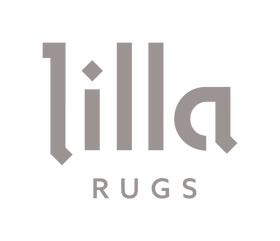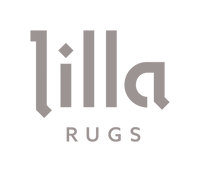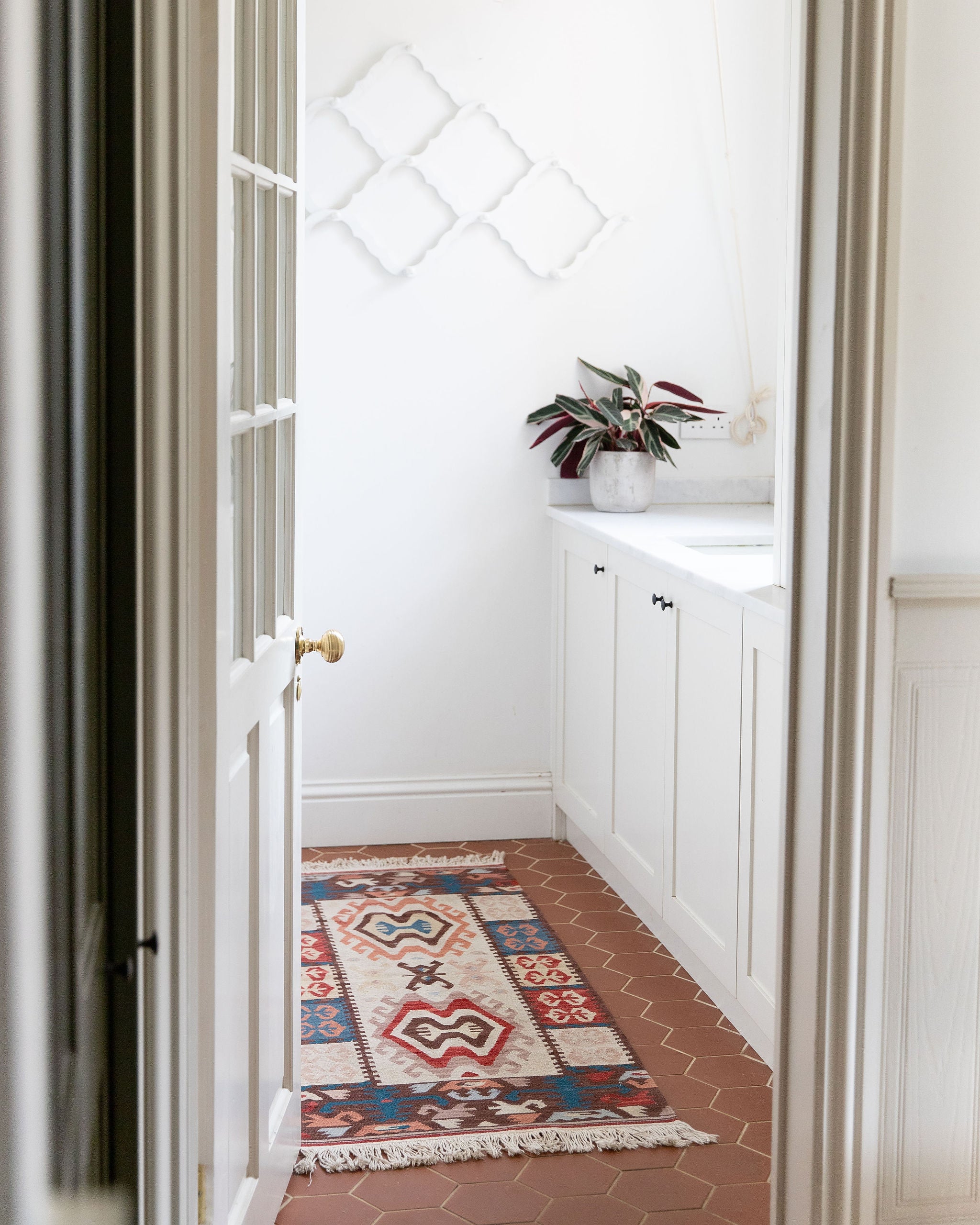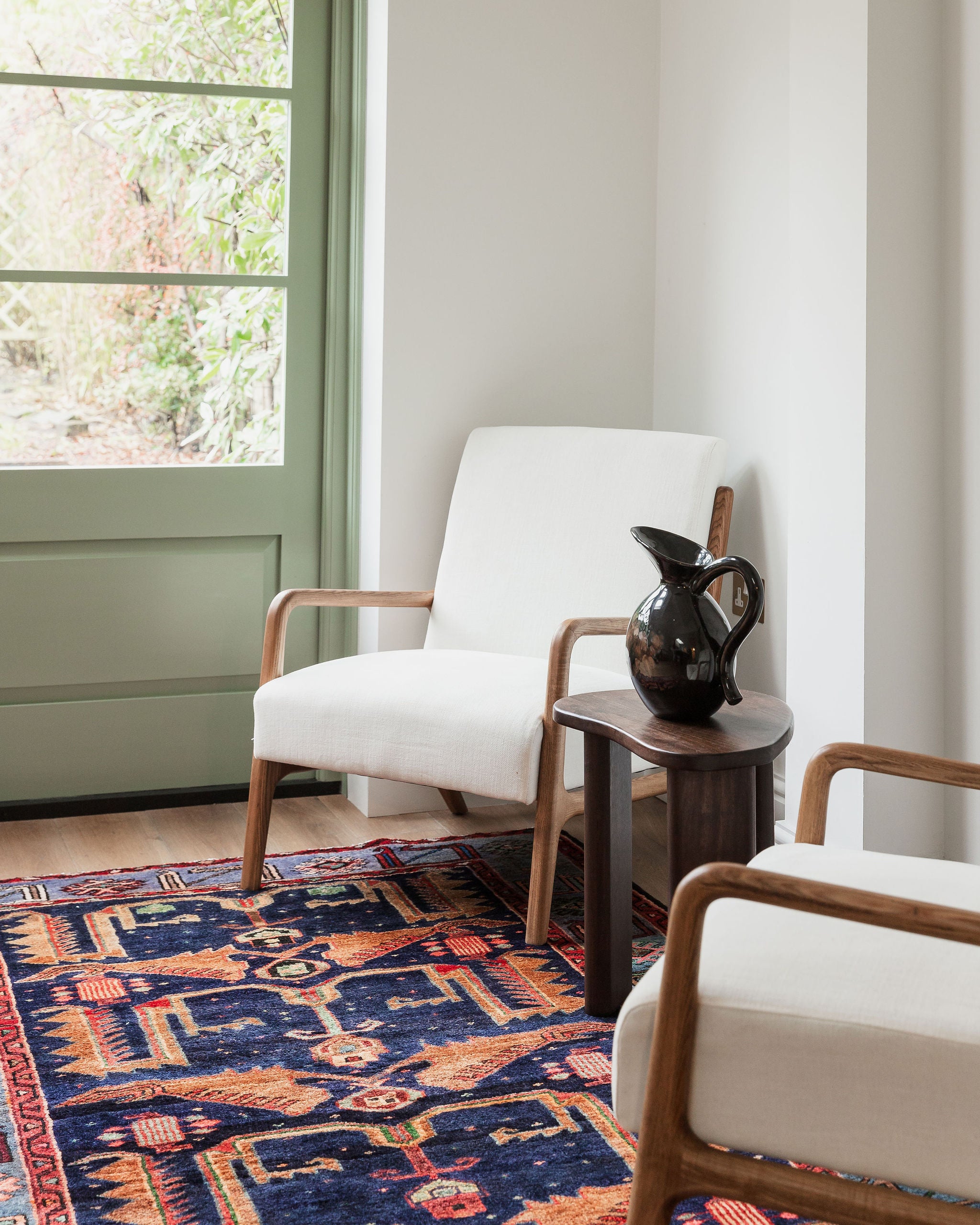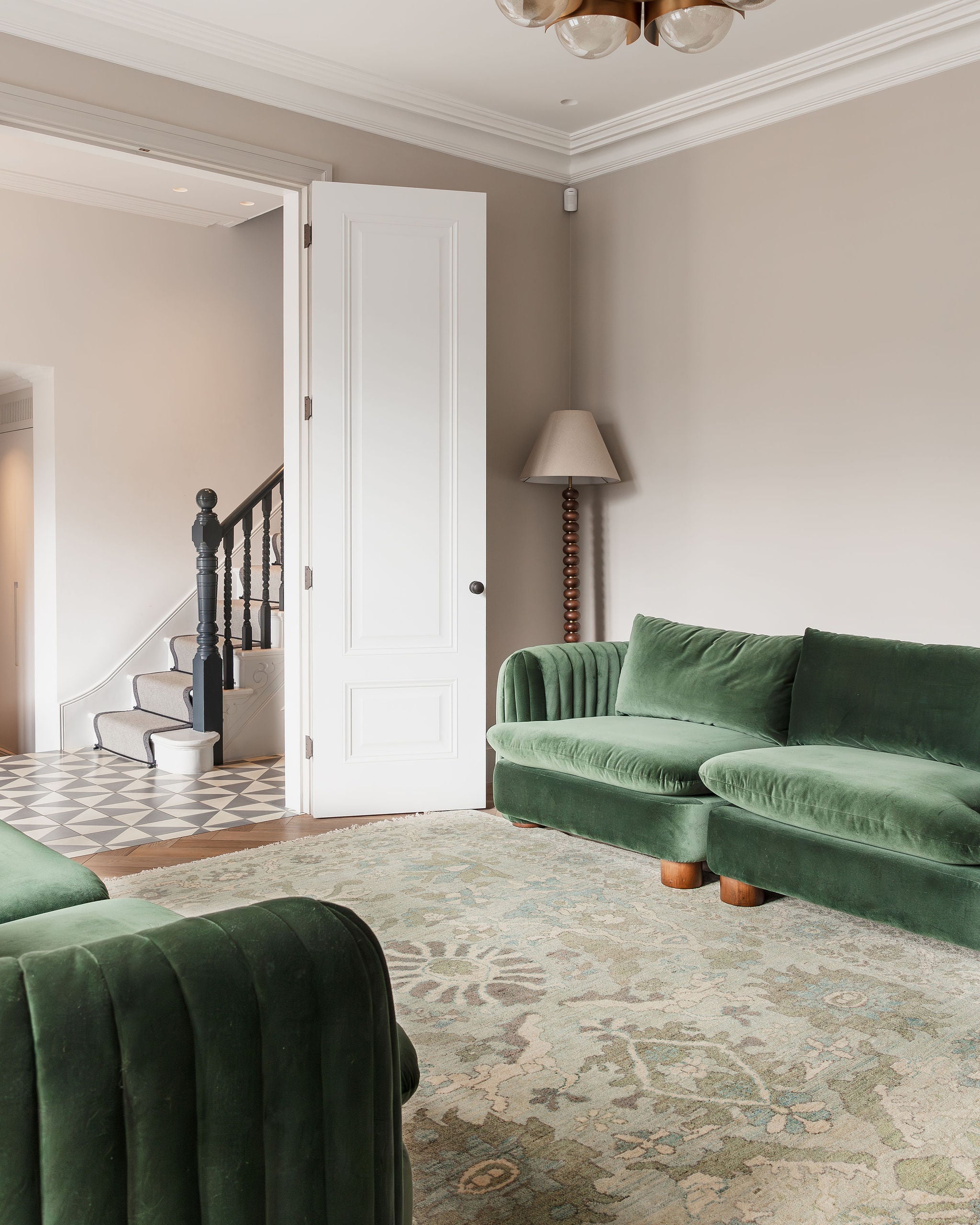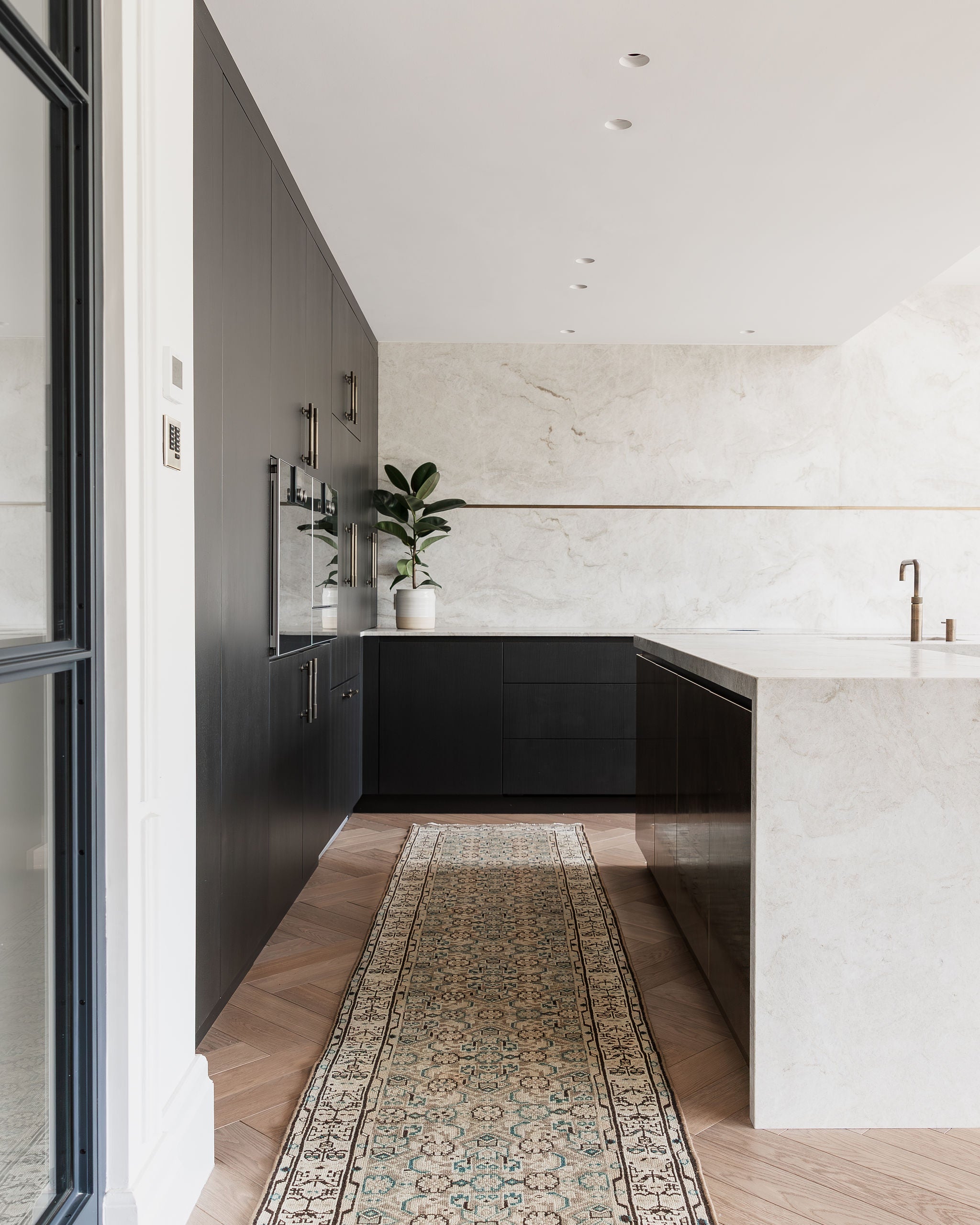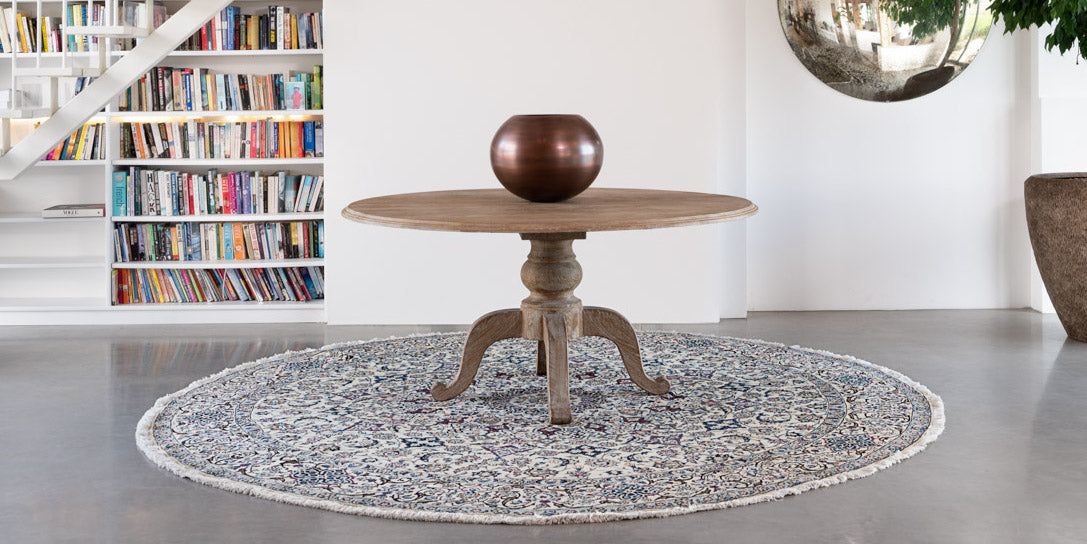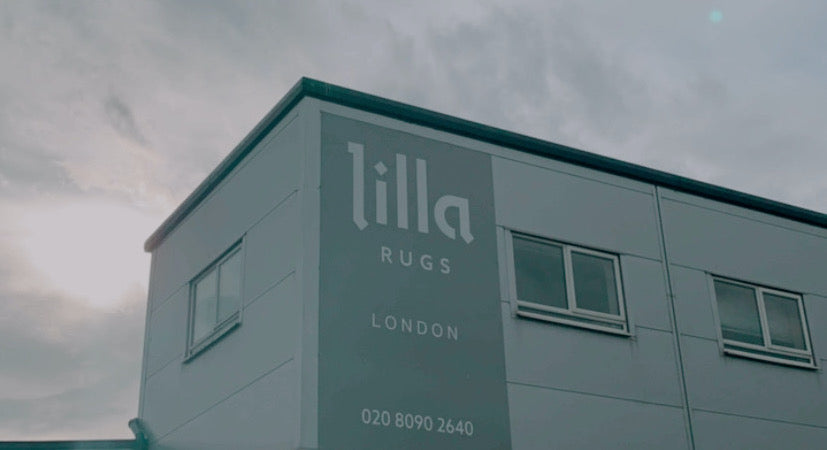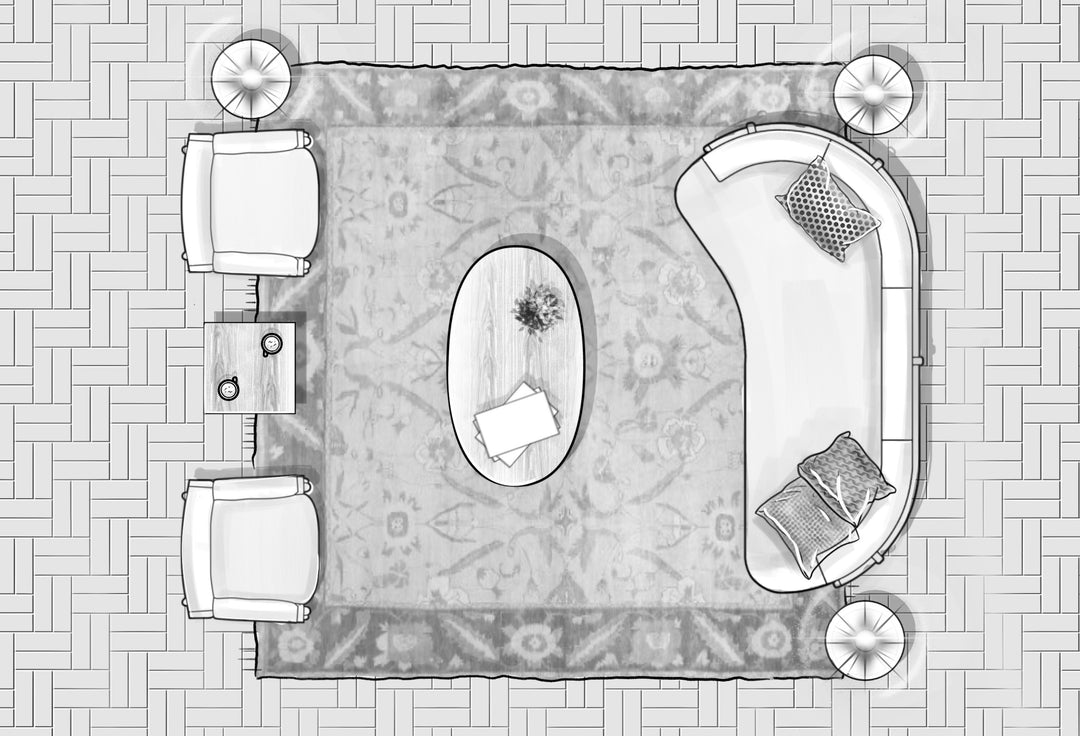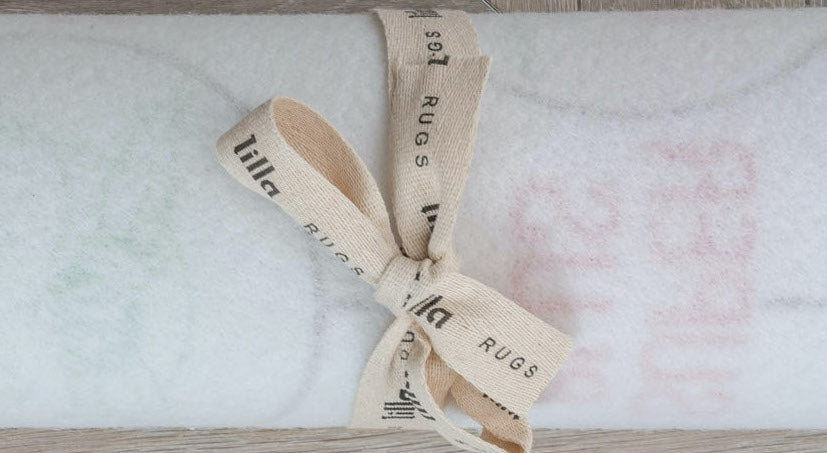Types of Persian Rugs
City Rugs
Isfahan
Location: the city of Isfahan is in the middle of Iran (desert to the right and Zagros mountains to the left). It is one of the most popular destinations to visit in Iran, with beautiful art, architecture, palaces and old bridges.
Design: the patterns are often inspired by the tile works in mosques or the gardens of the palaces. They are mostly floral in design. The have a high knot count and have a great reputation as some of the best and highest quality rugs in the country.
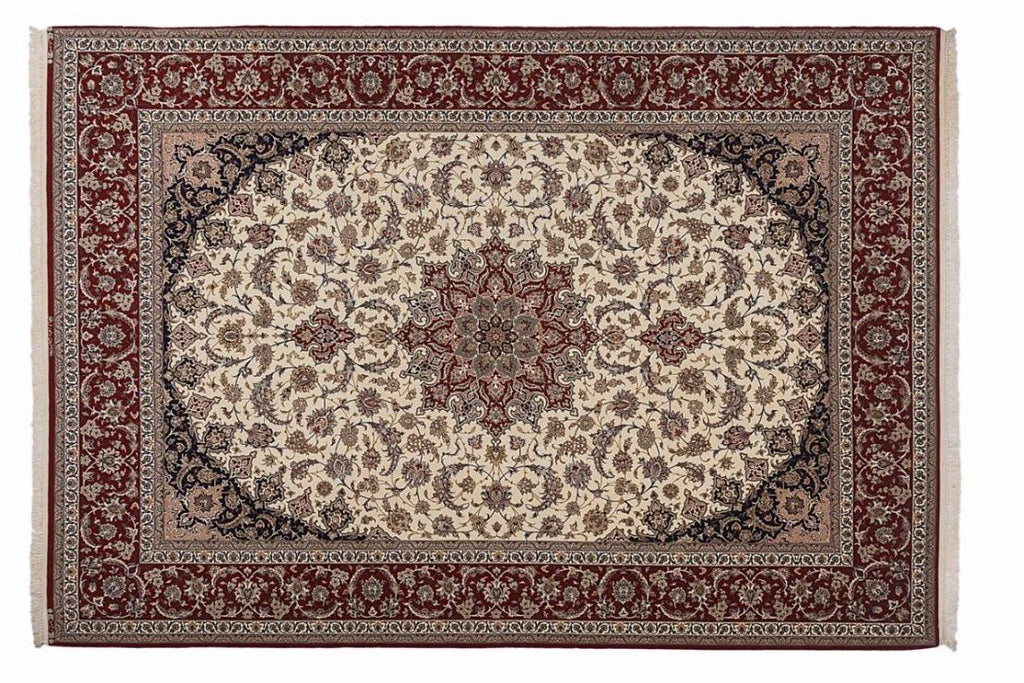
Nain
Location: east of Isfahan is the beautiful city of Nain. It is home to some of the oldest mosques in Iran (dating back to the 10th century).
Design: Nain rugs are mostly floral in design. The use a wonderful colour palette of ivory, navy blues, light blues and pinks. Sometimes you will see green and red, but not as often.
Nain rugs come in a variation of different qualities. You do have standard 'Nains' that are usually weaved just outside of the city, but following the known Nain designs. As for the higher quality, and those weaved in the city itself, Nain rugs have three-knot types: 4La, 6La, and 9La. In Farsi, the "La" translates to "Layer". This numbering helps decide the quality of a Nain rug - referring to the number of layers of threads that have been used in every warp-thread when weaving the rug. The lower the number the finer and higher density the knots the carpet has.
These have been the most popular style of high quality Persian rug in the UK over the past couple of years and today. Most likely because use the most neutral/ light/ subtle colours.

Tabriz
Location: around 600km west of Tehran and one of the biggest cities in the whole of Iran.
Design: Usually Tabriz designs have a central medallion that is surrounded by arabesques, and other floral & garden inspired patterns (cypresses and weeping willows). However, unlike most other cities and villages, Tabriz has one of the most diverse range of designs, from medallion, to figural, pictorial and more. The most famous Tabriz design (as below) is known as 'Tabriz Mahi'. The design is based on a famous Persian garden that is divided into four sections by a stream. In the stream are many fish. The word 'Mahi' in Farsi is 'Fish'.

Qum
Also spelt as Ghom, Ghome, Qom.
Location: around 150km south of Tehran is the city of Qum.
Design: Qum is a city most well known for their weaving of fine pure silk rugs. They are probably the highest in knot count and you will never see detail finer than you do in these Persian rugs. The designs are so intricate and life like they look like an HD screen! The patterns are borrowed from different areas across Iran, but generally feature gardens, medallions, plant and animal motifs.

Village Rugs
Abadeh
Location: between Shiraz and Isfahan
Design: originally Abadeh rugs were known for their patterns of vases and toned down colour palettes. However, they became more difficult to sell and so were inspired by the Qashqai tribes (see below) and their geometric designs. Now they can be identified by hexagons through the centre of the rug and birds, flowers, and trees in the surroundings and borders.

Ardebil
Location: North Iran - near the Caspian Sea.
Design: You may have heard of the famous 'Ardebil' rug that is in the Victoria and Albert Museum in London. However, this rug isn't actually thought to have been made in Ardebil. The exact origin of the rug is debated but it is thought to be made in or near Kashan. The reason it has become known as the 'Ardebil' is because it was put in a mosque in Ardebil and is also where it was sold.
Ardebil rugs have a thinner pile than lots of other Persian rugs and are geometric in design.

Bidjar
Location: the west of Iran - a small Kurdish town.
Design: the name Bidjar has the meaning of durability and strength to many rug experts. They are strong, yet compact and so extremely durable. The weavers use a heavy comb, made from wood and metal, to beat the weft and the knots, so that the pile almost stands up. The pile is therefore very tight and allows very little to seep into it. They are known as 'the king of carpets' due to this special weaving style and superiority.
The most well-known design is the 'Herati', also called 'fish pattern', as seen below.
These have been a very popular type of rug in the UK.

Hamadan
Location: Hamadan is really a city, situated in the west of Iran, around 300km from Tehran. It is in the village section when it comes to rugs, as it is all the nearby villages that actually do the weaving, and the city centre is simply used for trading. Hamadan is made up of over 134 villages, and each village has their own design of rug, such as Nahavand, Tuyserkan, Malayer, Hossein Abad. For obvious reasons, these Persian rugs become known as the more generic term of 'Hamadan' to simplify matters.
Design: Hamadan rugs are fairly easily recognisable by their use of repeated patterns. They are mostly geometric, but so sometimes use floral designs. They are usually deeper in colour palettes and feature reds, navy, and some bits of cream.

Heriz
Location: Northwest Iran, not too far from the city of Tabriz.
Design: the Heriz design is fairly recognisable. More so than other Persian rug designs. The centre features a large right-angled medallion, and usually has marked corners. They are really geometric in design. It's quite hard to find Heriz rugs in small sizes, usually the start at 300x200cm.

Kerman
Location: southeast of Iran. Really Kerman is a city, with a population of around 350,000. However, we place them in with the village rugs, as the quality of craftsmanship isn't quite as high as the main city rugs (above), though still a fantastic standard.
Design: the most traditional Kerman design usually features a red base colour and the pattern is dominated by a central medallion, with little pattern surrounding it, and a border. These are the rugs we use for our Persian Overdyed collection (with the exception of 1 or 2 that are made from Nain rugs). The quality of wool from this area takes particularly well to dyes and is of a good standard.

Kashan
Also spelt Keshan.
Location: between Isfahan and Tehran is the large city of Kashan. Much like Kerman, we place Kashan amongst the village rugs, due to the level of quality being associated with the city pieces. In terms of rugs, they're considered 'village' rugs. Kashan has been famous for its textiles and pottery for many years. The city was a key spot for trading and as a resting place along the silk road.
Design: when you think of a traditional 'Persian rug' it is often the red Kashan that springs to mind. Floral in design, with reds and navy blues. The other popular Kashan colours are creams and pistachio green. They come both with central medallions and all-over designs (no medallion).

Mashad
Location: in the east of Iran - again like Kashan & Kerman, a city, but with the rug quality in the section of village rugs. Mashad is the most 'holy' city in Iran.
Design: mostly traditional reds and navy in colour. Usually always featuring a central medallion.

Moud
Location: south of Mashad and south of Birdjan.
Design: Moud rugs use the 'Herati' pattern, which is a flower inside a rhomb, surrounded by four ancanthus-leaves. The leaves resembles fishes. Moud rugs come both with central medallions, and in all-over designs (without the medallion).

Senneh
Location: in the western part of Iran - the province of Kurdistan. Today the capital city is called Sanandaj, but it used to be known as Senneh.
Design: fine designs and elegant patterns. The colours are usually dark blue and reds. In Senneh they weave both rugs with a pile, as well as Senneh Kilims (flatweaves). Their design is recognisable and unique.

Tribal Rugs
Afshar
Location: southeast of Iran (around the city of Kerman) is where you'd find the Afshar tribes.
Design: geometric patterns, with the use of red and blue colours mostly. The most well-known design is to have squared medallions in the center

Baktiyar
Also spelt as Bakhtiari, Baktiar and Bachtiar.
Location: to the west of Isafhan, in the Zagros mountains is where the Baktiyar nomads/ tribes are known to live.
Design: The old Bakhtiyar designs are usually designed with the Khesti, which is the garden motif. However, many simply contain animals and plants that are symbolic of the Persian garden.
Known to be one of the most durable of all Persian rugs due to the wool from that particular area being thick and fairy solid.

Baluch
Also known as Beluch.
Location: The Baluchi tribes live in the area that borders Iran and Afghanistan. Baluch has become known as a general term for smaller tribes that consistent of nomads from different places across Iran. Along with rug weaving, they also farm (agriculture and sheep raising mainly).
Design: due to the location, you can draw parallels between the original Afghan rugs and Turkman rugs. This is both in the geometric designs and the deep, rich colours featured (burgundy reds, navy, black). Baluch rug designs are really representative of the Persian nomadic weaving style, and have a real feeling of true authenticity and craft.
Baluch rugs are often long and fairly narrow, as they were often designed as prayer rugs.

Gabbeh
Also spelt Gabba. You can also place Loribaft & Lori rugs close to this category.
Location: tribe in the south-west of Iran. Mostly female weavers.
Design: traditionally Gabbeh rugs were made as sleeping rugs. They are tightly woven, with a thick, very cosy, pile. They the most plain and simple of all Persian rugs, with little to no pattern. They do however feature small animals or trees in the corners/ centre. Gabbeh rugs are much thicker than all other types of Persian rugs, with a pile of around 7mm (as compared with 2-4mm in most rugs). The word 'Gabbeh' has Persian connotations as raw, natural and uncut.

Qashqai
Also spelt Ghashghai.
Location: the Qashqai nomads are from the Fars province in the southwest of Iran. They move around once or twice a year - in the winter near the Persian Gulf and in the summer up in the Zagros mountains (as it's cooler).
Design: typically Qashqai rugs are deeper in colours, usuing reds, browns, burgundy as the base colour. The pattern is weaved completely from memory and from things that have inspired the nomads on their travels, such as wildlife and nature. You'll see a lot of four legged animals, birds and trees on Qashqai rugs. Often they are made 100% of wool, making them easier to roll up and transport around with the nomads. Though sometimes they contain cotton.

Some examples of those not included: Loribaft, Lori, Farahan, Mir, Koliai, Sultanabad, Yalameh, Sarouk. Do reach out if you'd like some information on any of these type of Persian rugs. Or even something not on the list at all!
